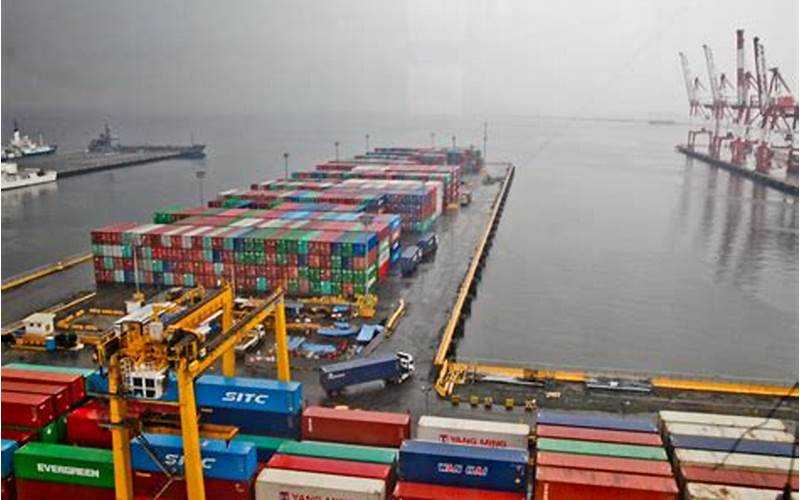
Source: bing.com
Hello, Vehicle Owner! Welcome to our comprehensive guide on shipping containers. In today’s fast-paced world, the efficient transportation of goods is crucial, and shipping containers have emerged as a game-changer in the logistics industry. In this article, we will explore the strengths and weaknesses of shipping containers, provide detailed explanations, address common FAQs, and encourage you to take advantage of this innovative solution for your transportation needs.
Introduction: Unveiling the Power of Shipping Containers
Shipping containers, also known as cargo containers, are standardized metal boxes designed for the transportation and storage of goods. They have revolutionized the global logistics industry by streamlining the process of moving cargo across various modes of transportation, including ships, trains, and trucks.
With their standardized dimensions, robust structure, and intermodal compatibility, shipping containers offer various advantages over traditional methods of cargo transportation. Let’s delve deeper into the strengths and weaknesses of shipping containers to understand their impact on the logistics landscape.
Strengths of Shipping Containers
In order to comprehend the significance of shipping containers, it is essential to explore their strengths and the benefits they bring to the table. Here are some key points to consider:
? Intermodal Versatility: Shipping containers are designed to be seamlessly transferred between different modes of transportation, enabling efficient door-to-door delivery.
? Standardization and Compatibility: These containers adhere to standardized dimensions, allowing for easy stacking, handling, and storage both on ships and at port terminals.
? Security and Protection: Shipping containers are built to withstand extreme weather conditions and provide a secure environment for goods, protecting them from theft, damage, and unauthorized access.

? Global Connectivity: With an extensive network of ports worldwide, shipping containers enable seamless international trade, connecting businesses across continents.
? Eco-Friendly Solution: Using shipping containers promotes sustainability by reducing the need for excessive packaging materials and minimizing carbon emissions associated with multiple handling.
?️ Modularity and Flexibility: These containers can be easily modified and repurposed for various applications, such as pop-up shops, temporary housing, or on-site storage.
Weaknesses of Shipping Containers
While shipping containers offer numerous advantages, it is important to acknowledge their limitations as well. Here are some key weaknesses to consider:

? Initial Investment: Acquiring shipping containers can involve a significant upfront cost, especially for individuals or businesses with limited financial resources.
? Limited Customization: Modifying shipping containers to accommodate specific cargo requirements or specialized equipment can be time-consuming and costly.
?️ Ventilation and Temperature Control: Maintaining proper ventilation and temperature control within shipping containers can be challenging, particularly for perishable goods.
? Weight Restrictions: Shipping containers have weight limitations, which may restrict the transportation of heavy or oversized cargo.
? Infrastructure Requirements: The utilization of shipping containers necessitates appropriate infrastructure, including ports, cranes, and specialized equipment for loading and unloading.
? Safety Concerns: Inadequate securing of cargo within shipping containers can lead to shifting during transportation, potentially causing damage or accidents.
Shipping Container Specifications
| Specification | Value |
|---|---|
| External Length | 40 feet |
| External Width | 8 feet |
| External Height | 8.6 feet |
| Internal Length | 39.4 feet |
| Internal Width | 7.7 feet |
| Internal Height | 7.9 feet |
| Tare Weight | 8,160 lbs |
| Max Payload | 59,040 lbs |
| Max Gross Weight | 67,200 lbs |
Frequently Asked Questions (FAQs)
1. Are shipping containers suitable for transporting fragile items?
Yes, shipping containers can be modified with appropriate packaging and interior features to ensure the safe transportation of fragile items.
2. Can shipping containers be customized for specific cargo requirements?
Absolutely! Shipping containers are highly versatile and can be modified to accommodate various cargo types, including temperature-controlled goods or oversized equipment.
3. How long does it take to transport goods using shipping containers?
The transportation time depends on the distance, mode of transportation, and other factors. However, shipping containers have significantly reduced transit times compared to traditional methods.
4. What are the legal and safety regulations associated with shipping containers?
Shipping containers must comply with international safety standards and regulations, ensuring the protection of cargo, personnel, and the environment during transportation.
5. Can I purchase or lease shipping containers for personal or business use?
Yes, you can either buy or lease shipping containers based on your requirements. Several companies offer container sales and rental services.
6. Are shipping containers environmentally friendly?
Yes, shipping containers contribute to environmental sustainability by reducing packaging waste and optimizing transportation efficiency, leading to lower carbon emissions.
7. How can I ensure the security of goods inside shipping containers?
Proper sealing, locking mechanisms, and advanced tracking technologies can enhance the security of goods inside shipping containers, minimizing the risk of theft and unauthorized access.
Conclusion: Embrace the Efficiency of Shipping Containers
It is evident that shipping containers have revolutionized the logistics industry, offering a wide array of benefits such as intermodal versatility, standardization, security, and eco-friendliness. Despite their limitations, these containers remain a cost-effective and efficient solution for transporting goods globally.
As a vehicle owner, leveraging the power of shipping containers can streamline your transportation operations, optimize costs, and enhance your supply chain’s overall efficiency. Embrace this innovative solution and unlock the vast potential it holds for your business.
Remember, the world is your oyster, and shipping containers are the keys to unlock its treasures. Start exploring the possibilities today!
In conclusion, shipping containers have truly transformed the logistics landscape, paving the way for seamless global trade and transportation. They have become the backbone of the supply chain, connecting businesses and individuals worldwide.
However, it is important to note that the successful utilization of shipping containers requires careful planning, adherence to safety regulations, and collaboration with trusted logistics partners. Always prioritize the safety of your goods, optimize your operations, and stay up-to-date with the evolving industry trends.
Embark on this voyage of efficiency, reliability, and sustainability with shipping containers as your guiding compass. Set sail towards a future where the world is united through seamless logistics, and your business reaches new horizons of success.
 MyVans Your Vehicle Solution
MyVans Your Vehicle Solution